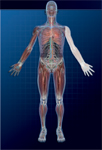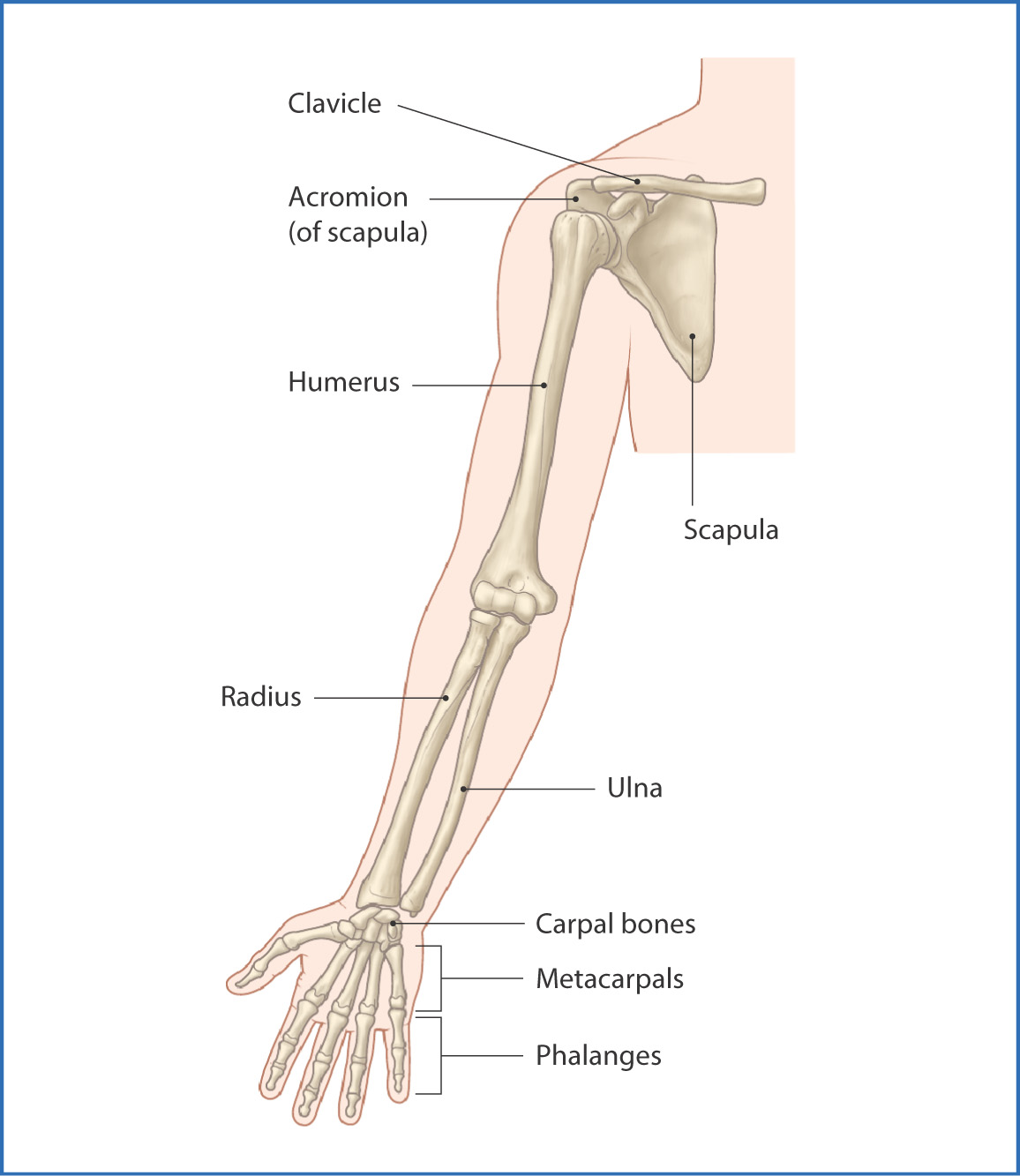
14
Introduction to the Upper Limb
The upper limb is attached to the pectoral girdle (shoulder girdle), which comprises the scapula and clavicle articulating at the acromioclavicular joint. The only bony point of contact between the chest (axial skeleton) and the upper limb is by way of the sternoclavicular joint. All other attachments to the upper limb and pectoral girdle are muscular.
The axilla (armpit) is a fat-filled, pyramid-shaped region between the chest wall and upper limb. It contains the brachial plexus, axillary artery and vein, and lymph nodes and acts as a funnel for neurovascular structures to pass to and from the upper limb. The rest of the upper limb is segmented into the arm, between the shoulder and the elbow, the forearm, from the elbow to the wrist, and the hand, which joins the forearm at the wrist (carpus).
The upper limb is highly mobile and capable of a wide range of controlled movements. The hand is a highly mobile and refined grasping and sense organ.
The upper limb is supported by the long bones—the humerus within the arm and the radius and ulna within the forearm (Fig. 14.1). Smaller bones provide additional support:
- carpal bones (wrist bones—the scaphoid, lunate, triquetrum, pisiform, trapezium, trapezoid, capitate, and hamate)
- metacarpals (palm bones—of which there are 5 [I to V])
- phalanges (of which there are 14: 2 in the thumb and 3 in each finger)
- metacarpals (palm bones—of which there are 5 [I to V])

FIGURE 14.1 Bones of the upper limb.
Muscles
The deep fascia of the upper limb provides a supportive investment for the upper limb and, by intermuscular septa and interosseous membranes, divides the various segments of the upper limb into anatomical anterior and posterior compartments. These compartments contain muscles, which act mainly synergistically to carry out specific functions, and nerves and vessels, which supply the contents. The muscles of the anterior compartments are primarily flexors; those of the posterior compartments are extensors.
Stay updated, free articles. Join our Telegram channel

Full access? Get Clinical Tree


